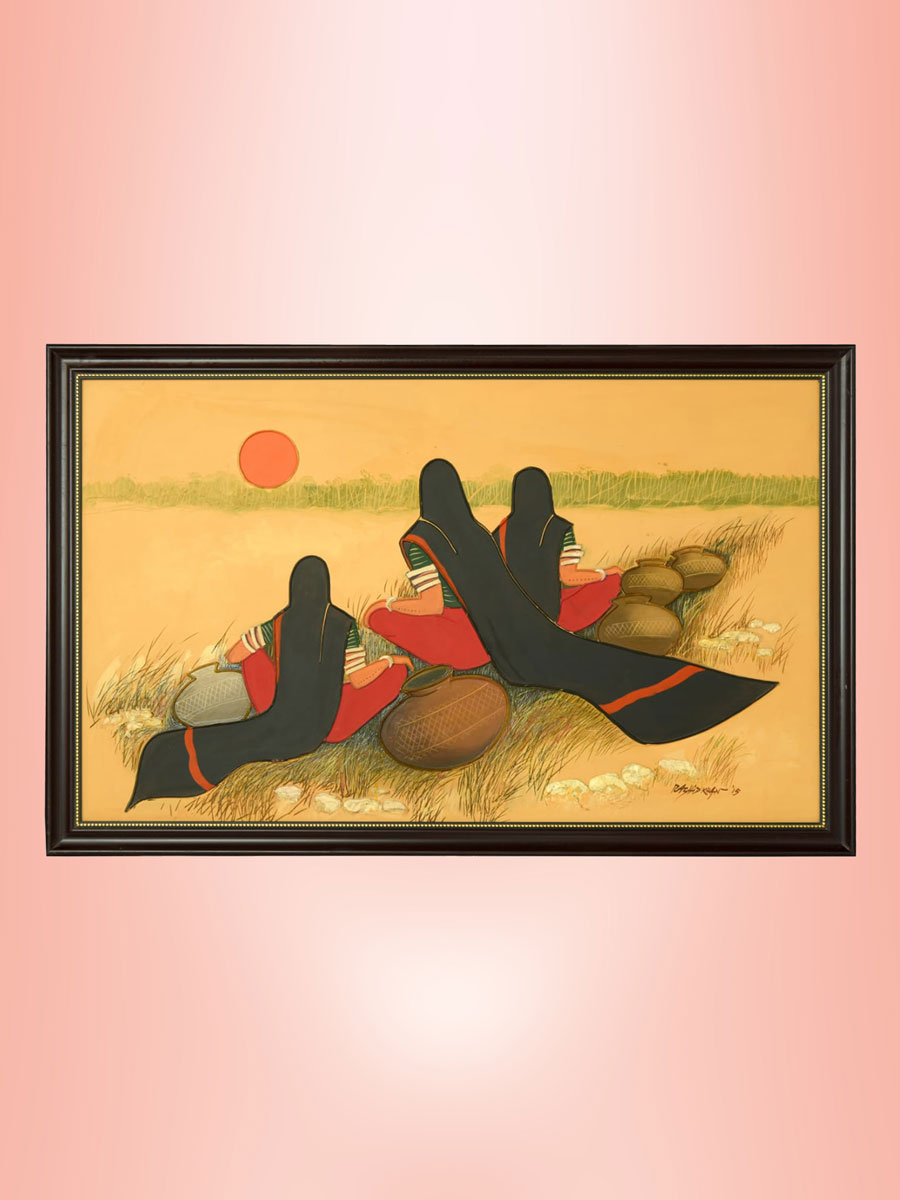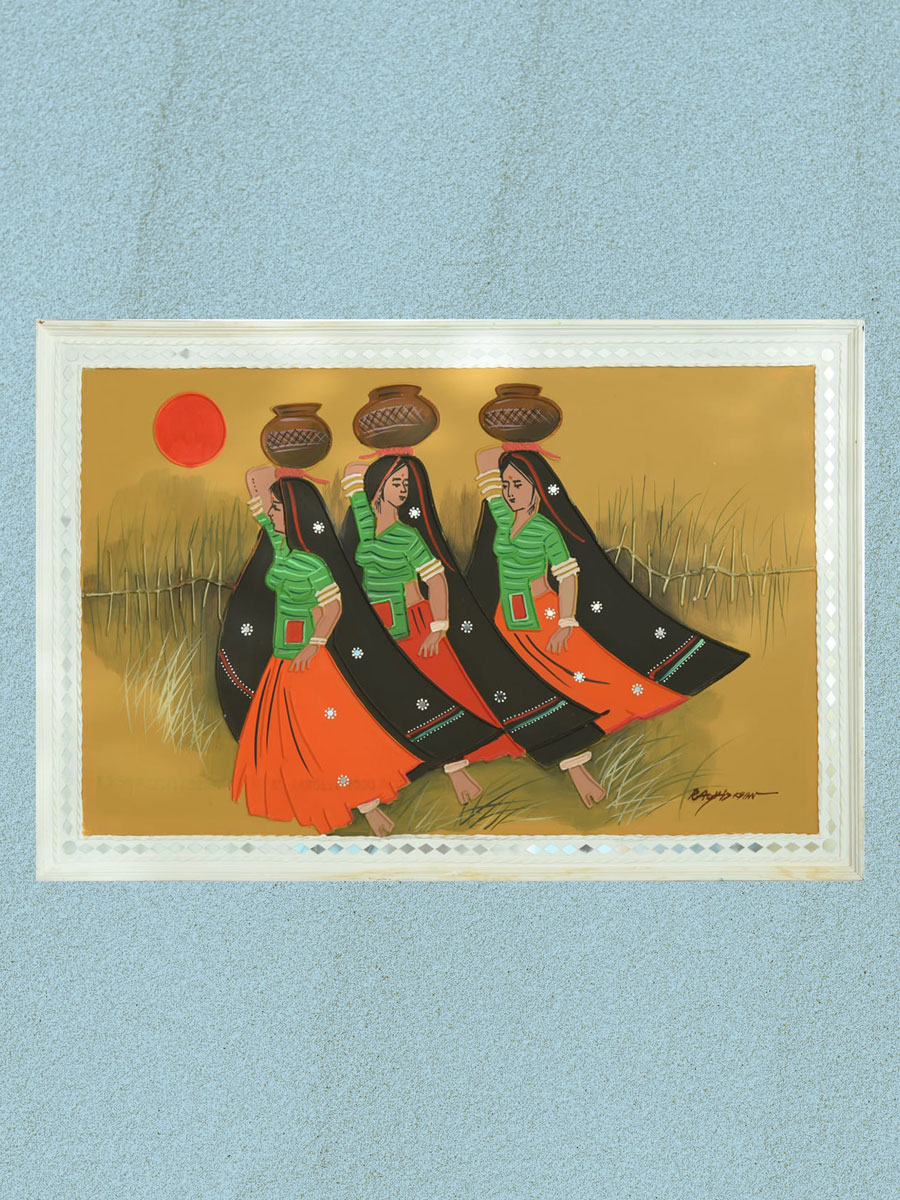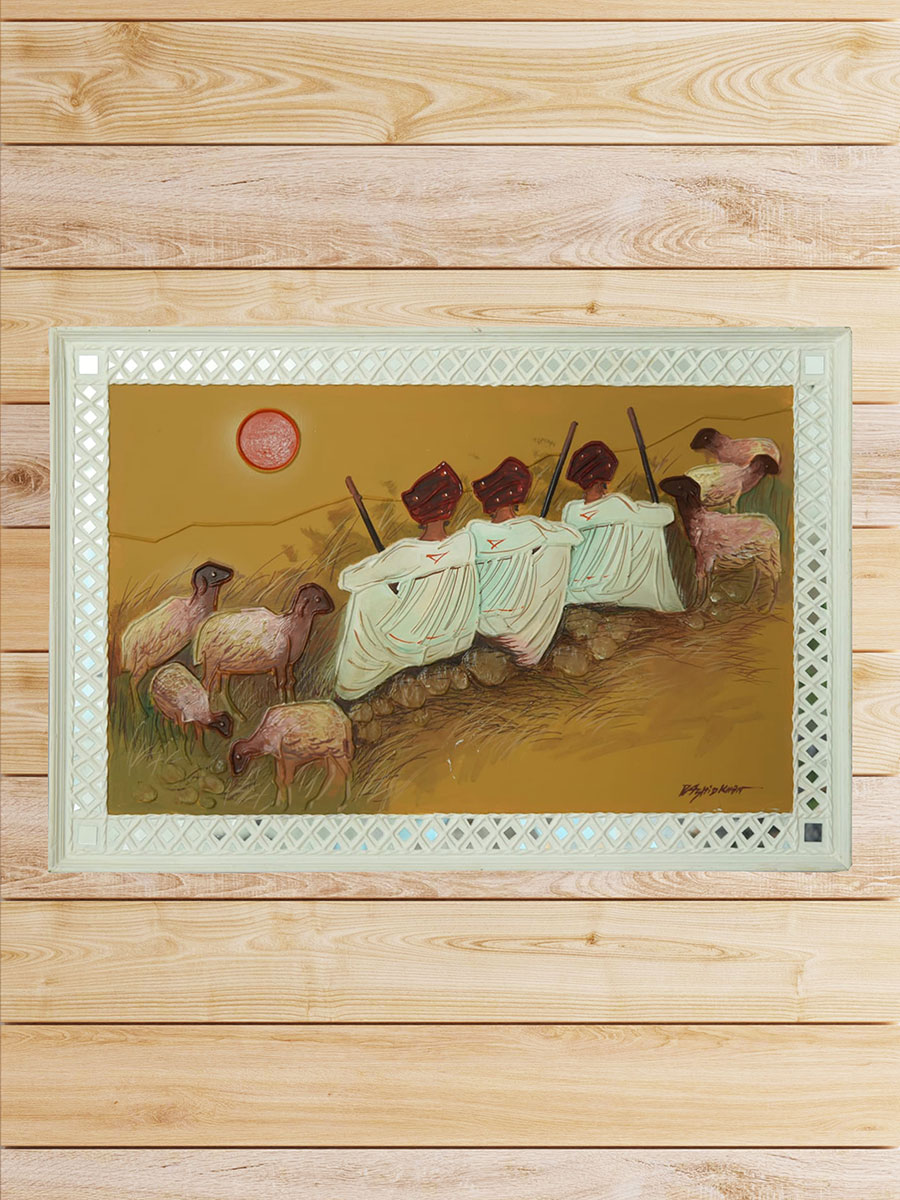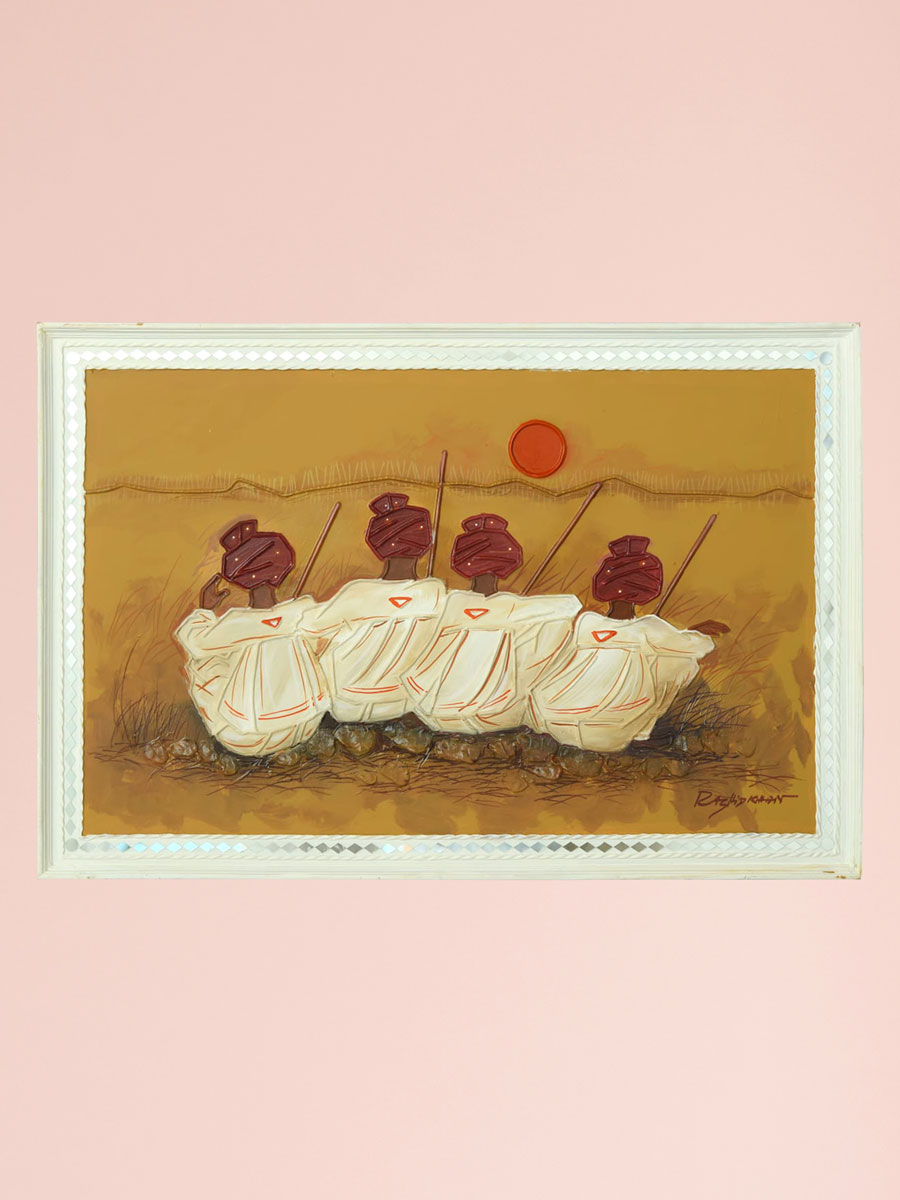Mud Painting Across Cultures: Perspectives on an Ancient Art Form
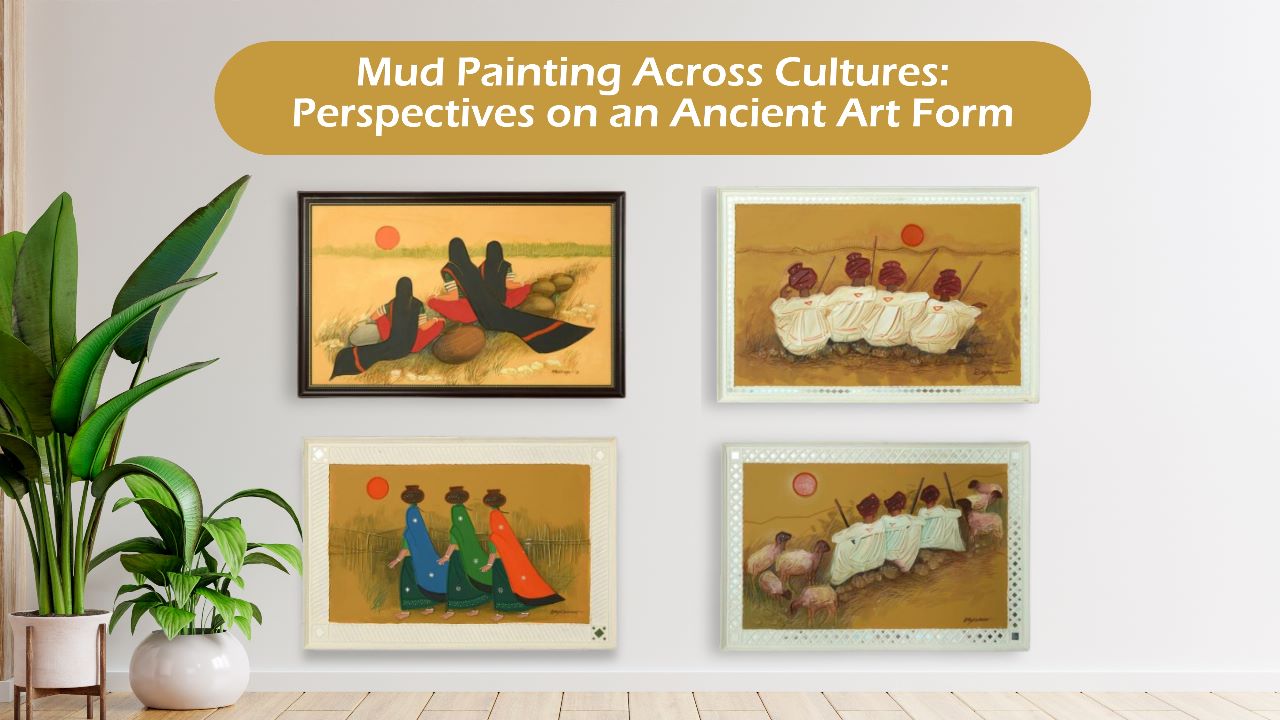
Human imagination and ingenuity have no limits and mud painting is an ancient art form that amply demonstrates this. It actually involves using mud as the primary material for creating paintings! This art form dates back to prehistoric times and has been practised across various cultures for thousands of years. Preparing a painting surface with mud collected from a riverbank or a lake is not only cost-effective, but also helpful in preserving the paintings for an extended period.
Mud painting has been an integral part of many cultures. In Africa, for example, traditional mud painting techniques are used to create intricate designs on the walls of homes and buildings. These designs often have symbolic meanings and are used to ward off evil spirits or to celebrate important events. In South America, indigenous communities have been using mud painting techniques for centuries with designs that often incorporate traditional symbols and imagery that have been passed down through generations. In Asia, countries like China and Japan have a long tradition of using mud painting techniques to create beautiful and intricate works of art. Chinese mud paintings often feature landscapes and scenes from nature, while Japanese mud paintings often depict animals or mythological creatures.
Exquisite handmade Kutchi mud painting of women enjoying sunrise on way to fetch water
Kutchi Mud Paintings
In the Indian context, mud paintings have played a significant role in preserving and promoting the country's rich and diverse cultural heritage. They have contributed to the development of various mud painting techniques, specific materials, and themes. One of the most significant examples of mud painting found in India is the Kutchi mud painting, which is practised in the Kutch region of Gujarat. This art form has been practised in the region for over 5000 years and has evolved over time, incorporating various influences from different regions and cultures.
Kutchi mud painting has played a crucial role in preserving the region's cultural heritage. Originally created as a means of expression and communication for the local tribal communities, these paintings were used to depict their daily lives, local customs, and rituals. In addition to being a form of expression, mud paintings were also used as a way to preserve and transmit cultural knowledge from one generation to another. The paintings often depict stories of gods and goddesses, village life, regional history and local folklore. They also depict scenes from the epics, Mahabharata and Ramayana.
Traditionally, these paintings involved using a mixture of mud, cow dung, and straw to create intricate designs on the walls of homes and other buildings. The mud was collected from the nearby riverbeds and mixed with cow dung to make the mixture more durable. The straw was then added to create a smoother texture and to prevent cracking. The designs created using this technique typically have geometric patterns, animals, birds, and other natural elements as the key themes. The colors used usually had natural earthy tones such as browns, reds, and yellows.
Exquisite handmade Kutchi mud painting of dancing women fetching water
Global And Timeless In Appeal
In recent years, Kutchi mud paintings have gained recognition as an art form and have been widely exhibited in India and around the world. Many contemporary artists in India - Shyamji Charan, Anwar Chitraka, Yusuf Khatri and Vrindavan Solanki for instance - have also been inspired by the traditional techniques and themes of Kutchi mud painting, using them in their own works to explore new ideas and interpretations. Over time, the Kutchi mud painting tradition has evolved, and new techniques and materials have been introduced. Nowadays, artists also use acrylic paints and canvas to create more intricate and detailed designs. However, what is still unique is the texture rendered to the painting by the use of mud or clay, that give a very distinctive 3D relief to these paintings.
Another unique aspect of Kutchi mud painting is the regional differences in styles. The mud paintings created by some communities tend to have more abstract and geometric designs, some others are more figurative and depict animals and other natural elements.
Exquisite handmade Kutchi mud painting of shepherds at sunset
‘Eco-friendly’ In More Than One Way
Mud painting does not require any harmful chemicals or synthetic materials that can damage the environment. Apart from the obvious eco-friendliness of the materials such as mud, water, and natural pigments, Kutchi mud paintings are ‘green’ in a subtle manner. Through depictions that feature elements of nature, such as animals, plants, and landscapes, Kutchi mud paintings highlight the interdependence between humans and the natural world. By communicating and glorifying lifestyles and traditions that consider the earth as the mother and nature as our responsibility, they seed the concept of ecology in the consciousness! The intricate designs and patterns created in Kutchi mud paintings also inspire people to appreciate the beauty of the natural world and to take steps to protect it.
Despite its historical and cultural significance, Kutchi mud painting is now an endangered art form. Many traditional mud painters have abandoned this art form due to lack of patronage and commercial opportunities, resulting in a decline in the number of indigenous practitioners. There is also a lack of awareness about the cultural and historical significance of Kutchi mud painting, which has further contributed to its decline.
To revive this art form, renewed awareness is necessary. Promoting Kutchi mud painting as a form of sustainable and eco-friendly art can help generate interest in this endangered art form. Governments and non-governmental organizations can also play a role in preserving this art form by providing commercial opportunities to traditional mud painters, promoting Kutchi mud painting as a major heritage art, and organizing workshops and training programs for younger generations to learn this art form.
Exquisite handmade Kutchi mud painting of farmers at sunset
Kutchi mud paintings are not just relics of the past. They are a testament to the creativity, ingenuity, and resilience of the people of the Kutch region in India. They are a living expression of a way of life that honors the earth as our mother and nature as our responsibility. Thus, they become a beacon of hope for a more sustainable future. As we face the challenges of climate change and environmental degradation, we can draw inspiration from the eco-friendly principles of Kutchi mud paintings and strive towards a more harmonious and sustainable relationship with the natural world. Let us cherish and protect the cultural heritage of Kutchi mud paintings, and take on the responsibility of preserving our connection to the natural world and to our past.
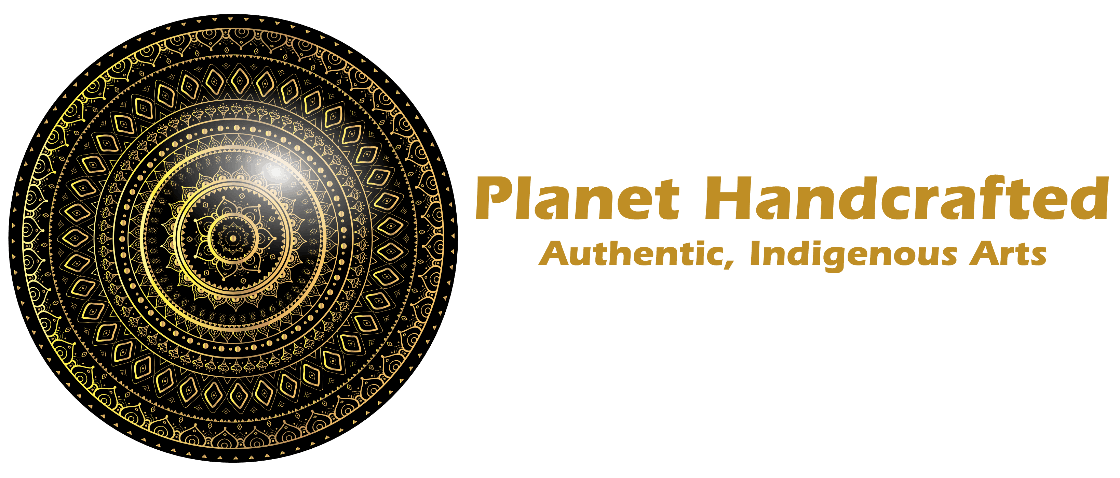

 USD
USD  GBP
GBP EUR
EUR AED
AED



